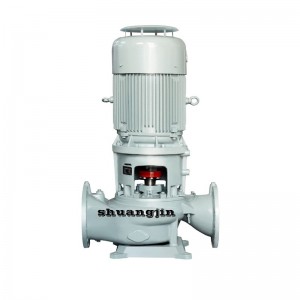On September 22, 2025, with the acceleration of the global energy transition, Heat Pump Cooling Systems, thanks to their high efficiency and energy-saving advantages, have become a new growth pole in the HVAC field.According to the latest report from the International Energy Agency (IEA), the global heat pump market size will exceed 120 billion US dollars in 2024, with a compound annual growth rate of 8.7%.This trend directly drives the upgrading of the Pump Supply industry chain.Leading Pump Vendors are seizing market opportunities through technological integration and capacity expansion.
Technological upgrades drive the explosion of demand
The core of a heat pump cooling systems lies in the efficient transfer of low-temperature heat sources through circulating pumps, and its performance is highly dependent on the reliability and energy efficiency ratio of the pumps.Recently, Nanfang Pump Industry, the leading domestic pump manufacturer, announced the launch of its third-generation magnetic levitation centrifugal pump, which is specially designed for a wide temperature range of -30℃ to 120℃.Its energy consumption is 23% lower than that of traditional products.Li Ming, the technical director, stated: "The heat pump system has extremely high requirements for the corrosion resistance and quietness of the pump.We have addressed the industry's pain points through material innovation."
The reconstruction of the supply chain has given rise to new models of cooperation
Facing the surging orders, Pump Vendors are establishing deep binding relationships with heat pump manufacturers.For instance, Grundfos signed a five-year strategic agreement with Midea Group to exclusively supply variable frequency circulating pumps for its European production base.This model, which shifts from simple component supply to joint research and development, has become the industry standard.Zhang Hua, the secretary-general of the International Pump and Valve Association, pointed out that in the next three years, Pump Vendors with system integration capabilities will capture more than 70% of the market share.
Policy dividends open up incremental space
The implementation of the EU carbon tariff (CBAM) has forced enterprises to accelerate green transformation.Heat pumps, as a zero-carbon heating solution, have received subsidies from many countries.The German government plans to provide a subsidy of 5,000 euros for each heat pump by 2026, directly stimulating the growth in pump demand.Under the domestic dual carbon goals, the northern coal-to-electricity project has cumulatively purchased over 2 million heat pump devices, driving the market size of supporting pumps to exceed 8 billion yuan.
Challenges and opportunities coexist
Despite the broad prospects, fluctuations in raw material prices and international trade barriers remain the main risks.In 2024, the price increase of rare earth permanent magnetic materials led to a 15% rise in pump costs, forcing some small and medium-sized enterprises to withdraw from the high-end market.Experts suggest that Pump Vendors need to enhance their risk resistance capabilities by vertically integrating their supply chains (such as building their own rare earth processing plants).
Conclusion
Driven by the dual forces of the energy revolution and climate action, heat pump cooling systems are reshaping the landscape of the pump industry.Pump Vendors that have made early plans for technological research and development and built agile supply chains are expected to occupy the commanding heights in the trillion-yuan market.
Post time: Sep-22-2025

